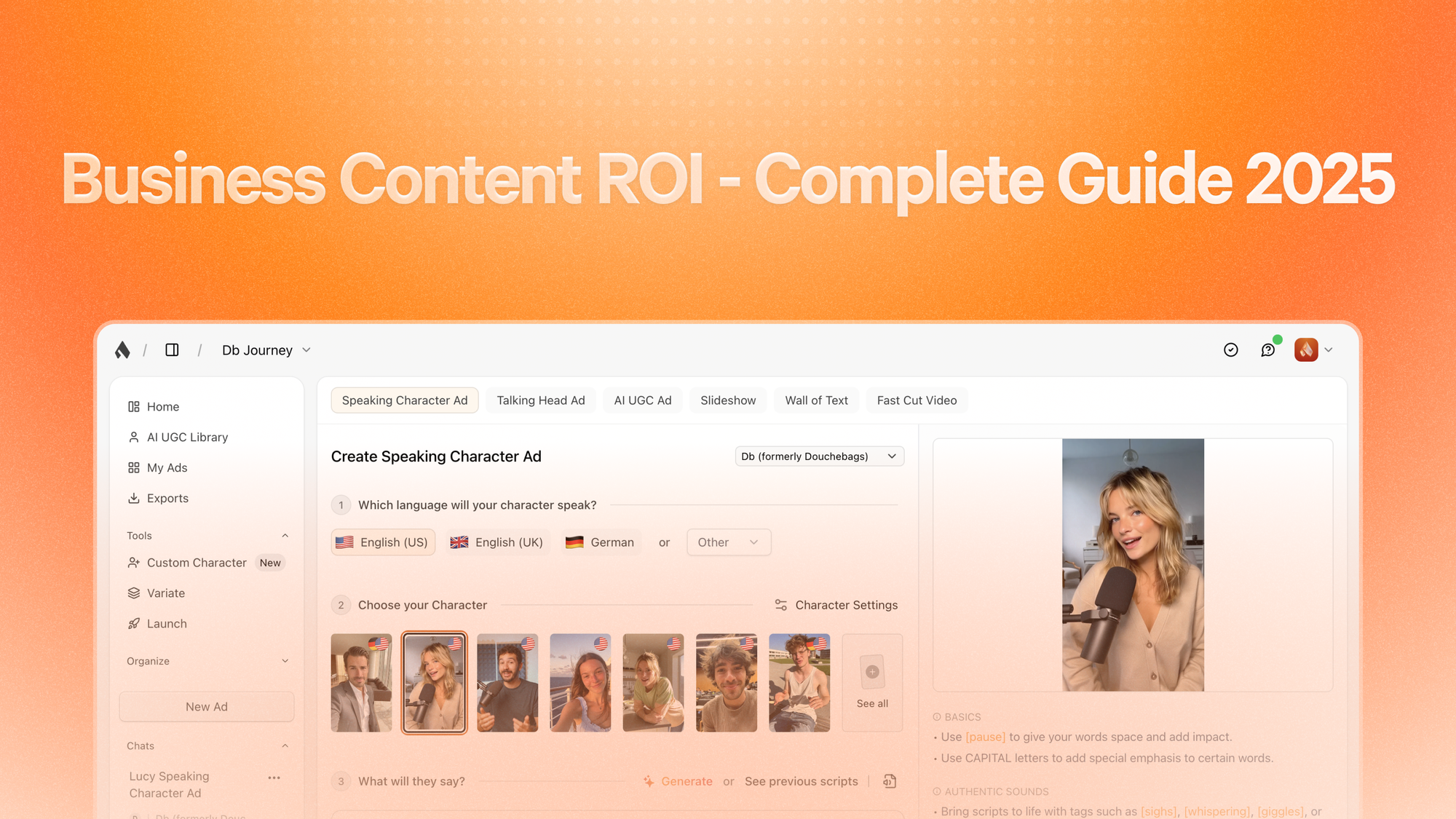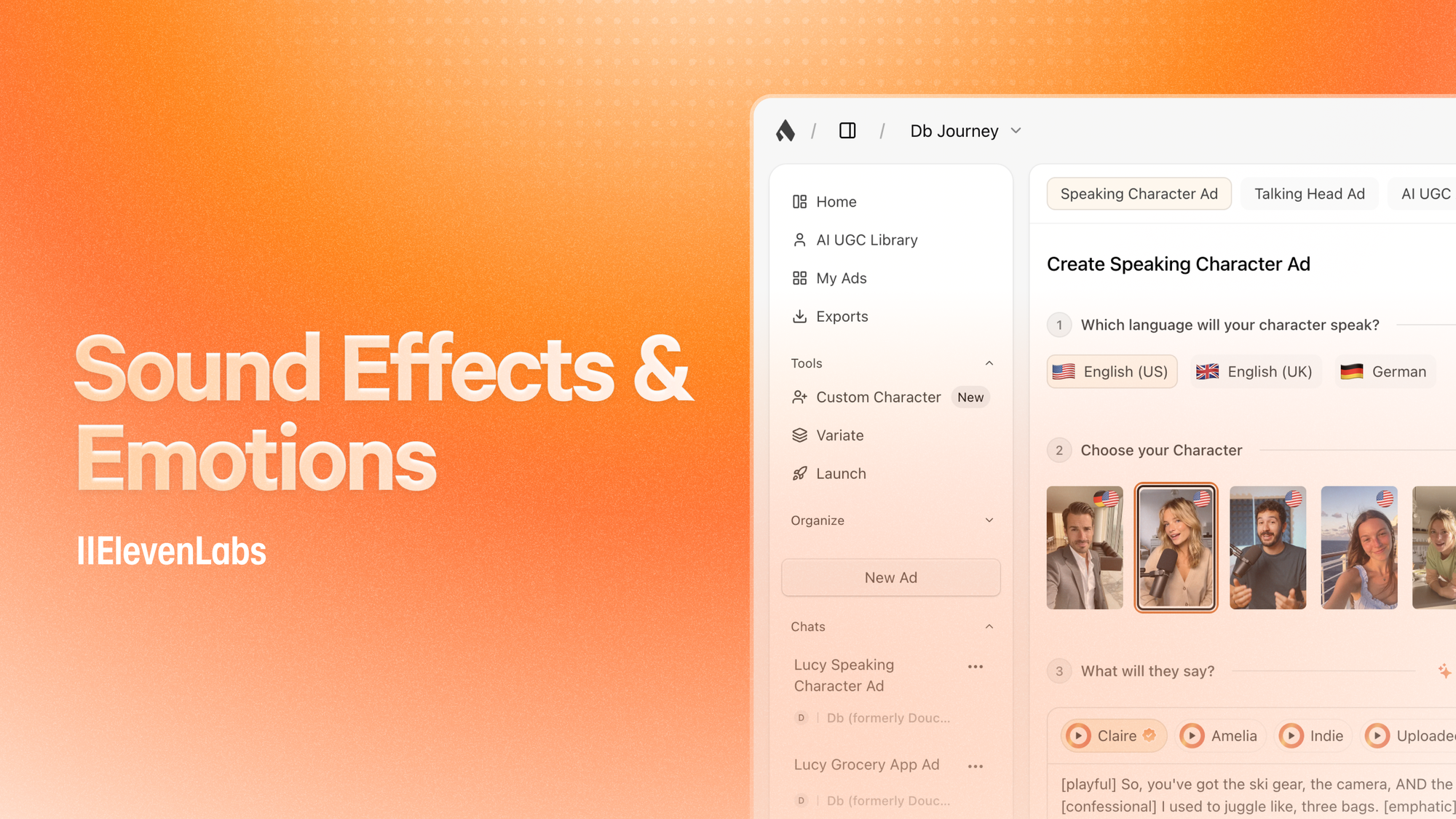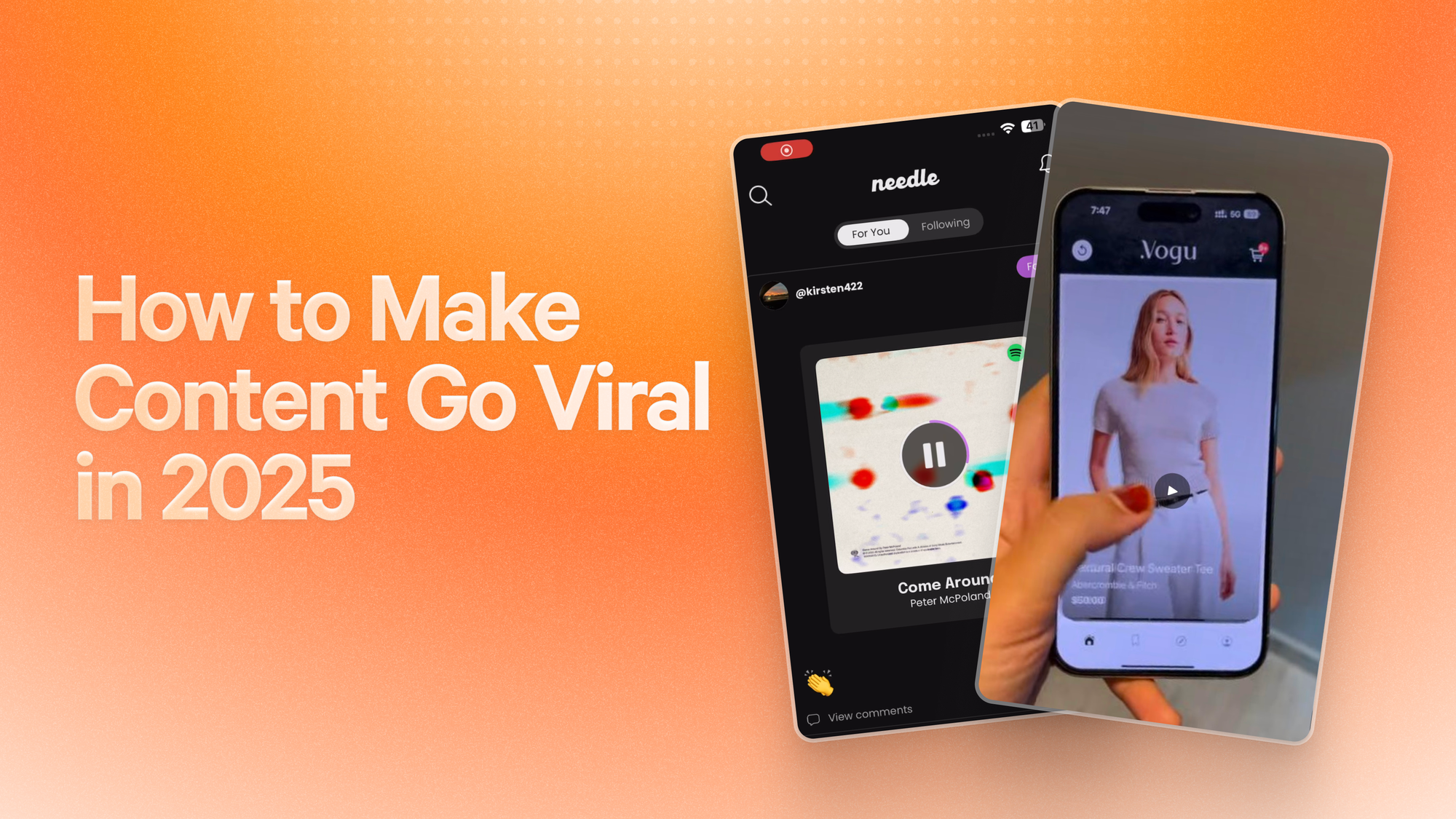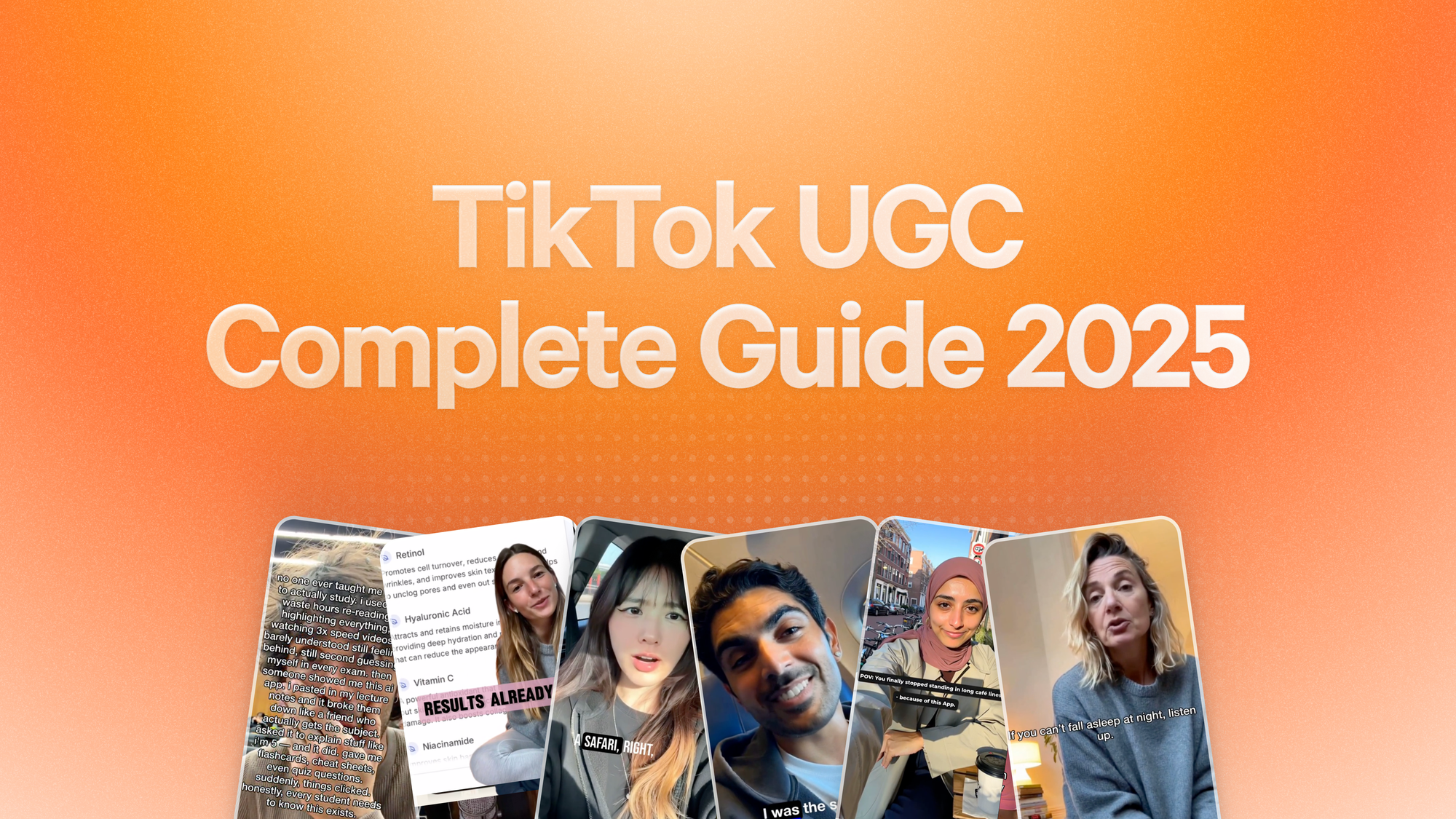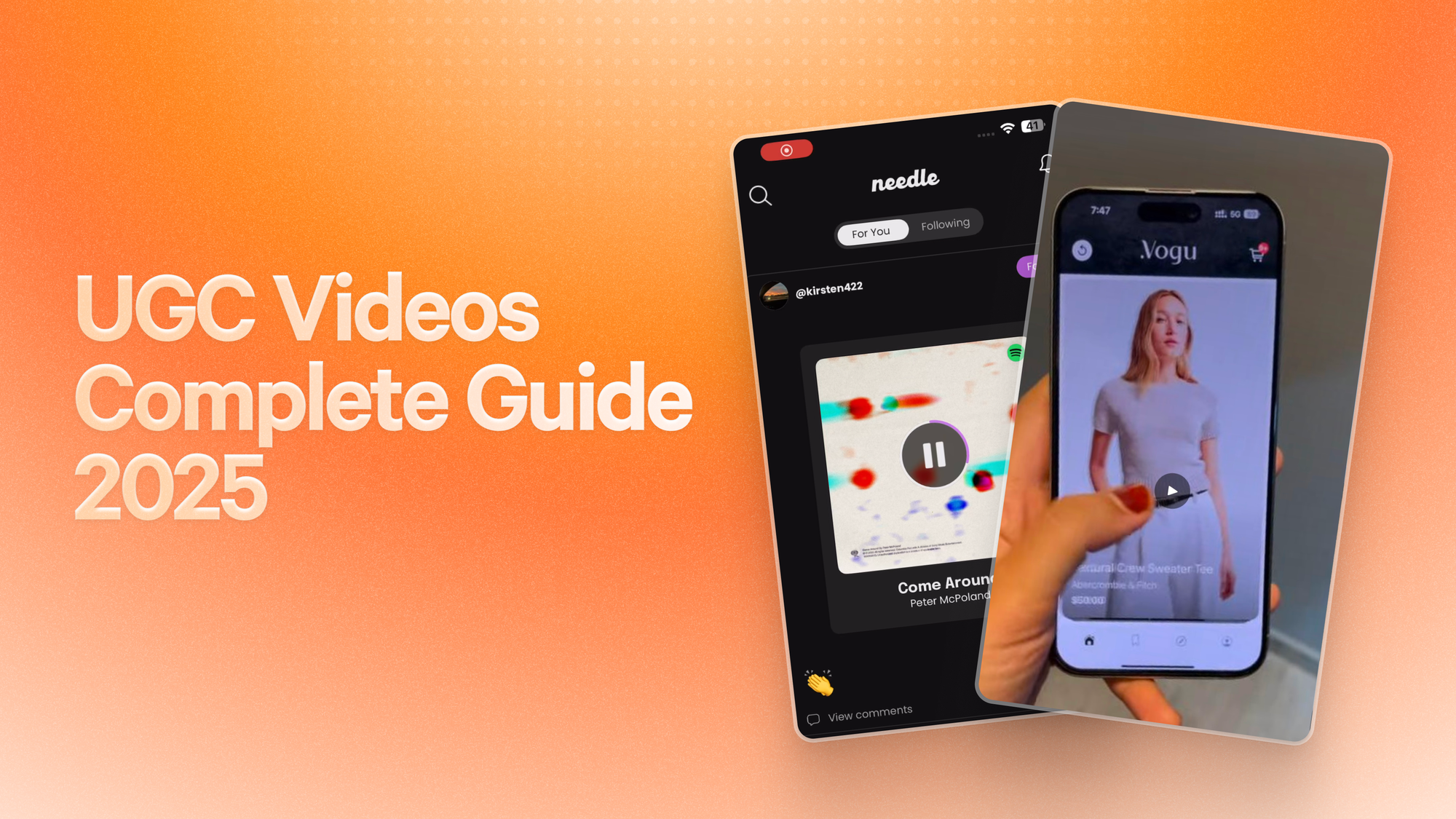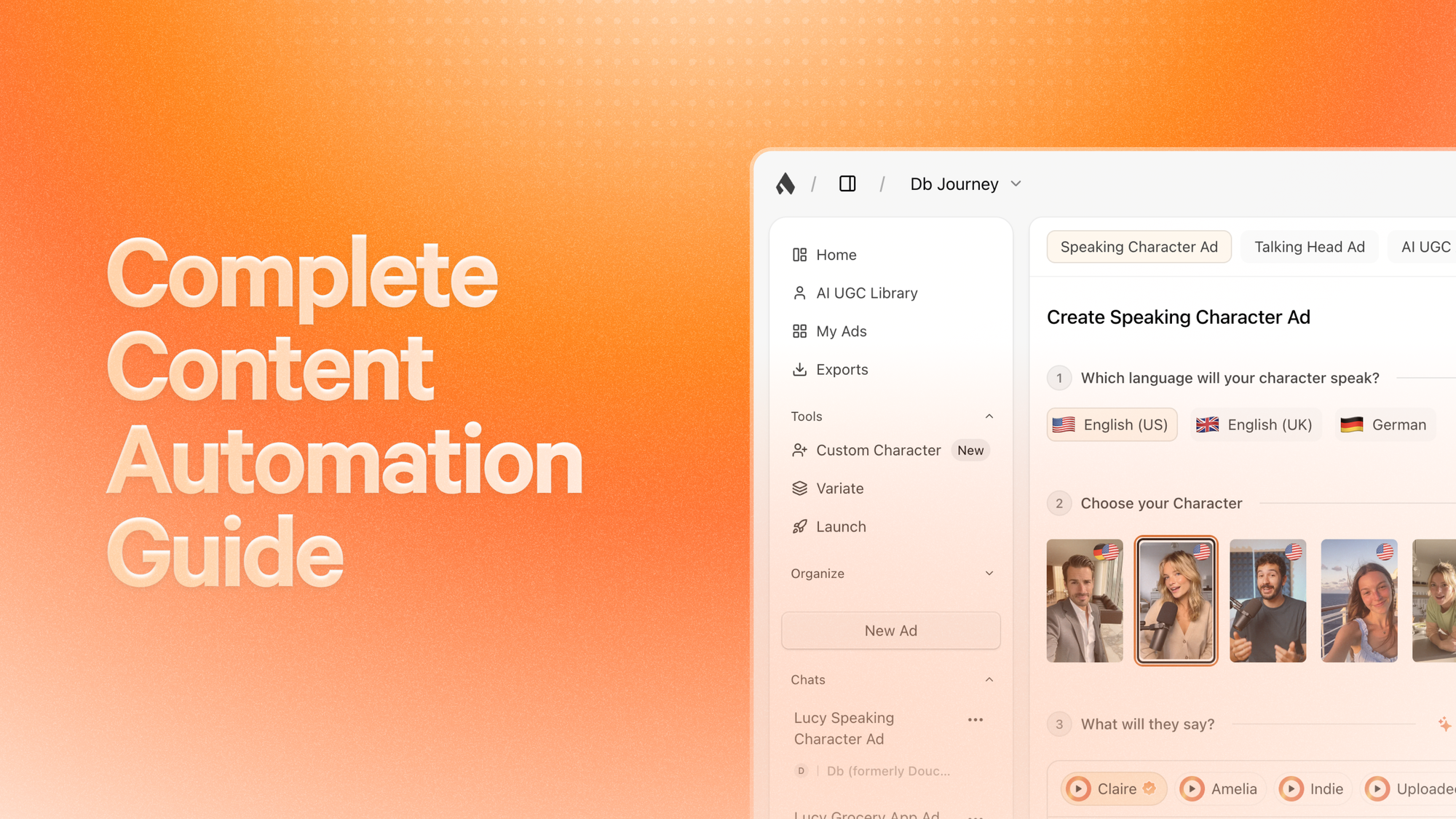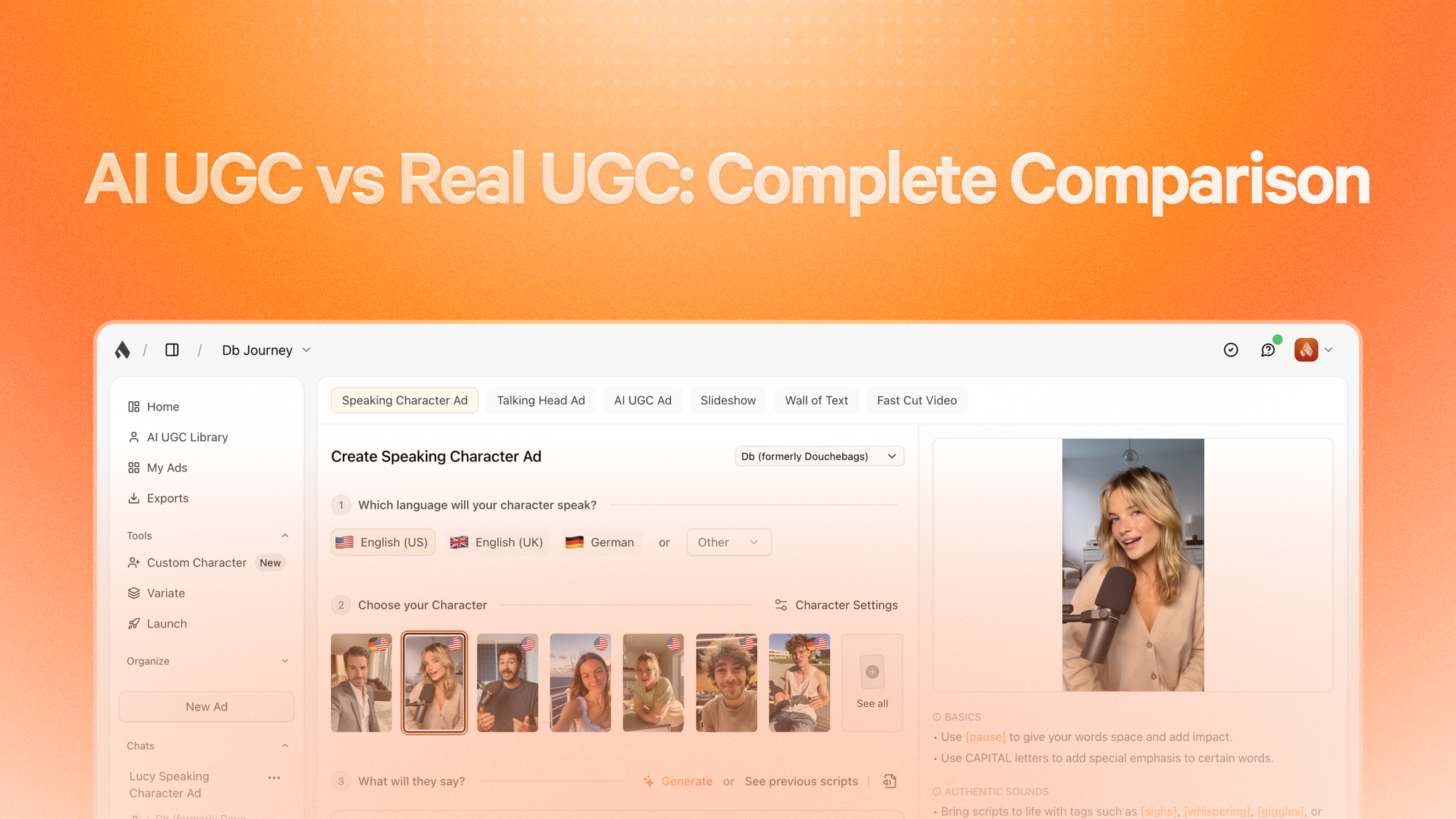Business Content Creation: ROI Guide for Companies
Content marketing promises the world but delivers disappointment for many companies struggling with ROI measurement challenges - with 84% of B2B marketers agreeing that collecting data and measuring content performance across various platforms is challenging. While competitors waste budgets on vanity metrics, smart businesses use data-driven frameworks to turn content from a cost center into their most profitable growth engine. The difference? Understanding exactly how to calculate, optimize, and scale content ROI across B2C channels.
B2C Content That Actually Converts
The ROI Reality Check for B2C Content
B2C content marketing operates in a fundamentally different landscape than B2B. With shorter sales cycles and emotional purchase decisions, B2C brands can achieve immediate returns while building long-term customer relationships. The key lies in understanding which channels deliver the highest ROI and why.
Top-Performing B2C Content Channels by ROI:
- SEO Content: 748% ROI - The highest-performing channel, with businesses typically generating $7.48 for every $1 spent on SEO
- Influencer Marketing: High ROI - 28% of marketers report seeing the highest ROI from Facebook influencers
- Email Marketing: 3600-4200% ROI - Email campaigns generate $36-$42 for every $1 spent
- Paid Social Media Content - Ranked as #2 highest ROI channel for B2C brands
- SEM/PPC: 200% Average ROI - Well-optimized PPC campaigns typically return $2 for every $1 spent
The standout insight? Content marketing generates 3x more leads than outbound marketing while costing 62% less to execute. This efficiency advantage compounds when you optimize for the right channels and measurement frameworks.
Ready to transform your content ROI instantly?
Start using Superscale right now to 10x your content output while cutting production costs by 80%. Our AI-powered platform turns one video concept into dozens of high-converting variations across every platform – maximizing your highest-opportunity channels without the traditional time and budget drain.
What Makes B2C Content Different
B2C content success stems from emotional connection and immediate value delivery. Unlike B2B's multi-stakeholder decision processes, B2C content can drive immediate purchases from single decision-makers. This creates opportunities for:
- Direct response campaigns that convert on first exposure
- Impulse purchase optimization through strategic content placement
- Social proof amplification via user-generated content
- Viral distribution potential through shareable, entertaining content
However, some B2C verticals (weddings, home renovation, luxury goods) still have extended consideration periods. Your attribution windows must reflect these category-specific buying behaviors.
The Mobile-First Content Reality
With 94% of users holding phones vertically and 80% of social media traffic coming from mobile devices, successful B2C content must be designed mobile-first. This shift isn't just about responsive design—it's about creating content that thrives in the native mobile experience.
The brands winning in B2C content understand that mobile consumption patterns dictate content formats, engagement windows, and conversion mechanisms. They optimize for thumb-stopping creative, vertical video formats, and micro-moment decision triggers.
ROI Calculation Framework: Beyond Vanity Metrics
Core Content ROI Formula
Start with the fundamental calculation that drives all content investment decisions:
Content ROI = (Revenue Attributed to Content − Content Cost) / Content Cost
This basic formula requires sophisticated attribution to be meaningful. Here's how to implement it properly:
Revenue Attribution Methods
1. Direct Conversions Track transactions or signups occurring directly on content pages. This includes:
- Product page conversions from blog traffic
- Newsletter signups from educational content
- Purchase completions from video content views
2. Assisted Conversions Capture revenue from multi-touch customer journeys where content influenced the decision:
- First-touch attribution for awareness content
- Multi-touch attribution across the customer journey
- View-through conversions from social content exposure
3. Organic Traffic Value (OTV) Quantify the "media cost avoided" by ranking organically:
- Calculate equivalent paid search costs for organic keywords
- Measure incremental traffic value vs. previous periods
- Track branded search lift following content publication
Advanced ROI Calculations for Different Business Models
Lead Generation Model: ROI = ((Leads × Lead-to-Customer Rate × Average Order Value) − Content Cost) / Content Cost
Subscription/SaaS Model: ROI = ((New Customers × Customer Lifetime Value) − Content Cost) / Content Cost
E-commerce Model: ROI = ((Direct Sales + Assisted Sales + Customer Retention Value) − Content Cost) / Content Cost
Content CAC and LTV Integration
For businesses focused on customer acquisition:
Content CAC = Total Content Spend / New Customers Attributed to Content
Then calculate ROI via customer lifetime value: ROI = ((New Customers × LTV) − Content Cost) / Content Cost
This approach particularly benefits subscription businesses and high-LTV products where initial content investments pay dividends over customer lifespans.
Attribution Window Strategy
B2C attribution windows should reflect actual buying behavior:
- Impulse purchases: 1-7 day windows
- Considered purchases: 30-90 day windows
- High-ticket items: 90-180+ day windows
- Seasonal products: Annual attribution cycles
Track both direct and assisted conversions within these windows, including branded search lift and email signups as leading indicators of future revenue.
Measurement Tech Stack
Implement proper measurement infrastructure:
- Google Analytics: 84% of websites using analytics tools choose Google Analytics, with top 500 US retailers implementing GA tracking at 64% adoption rate
- Social Analytics: Platform-specific engagement and conversion data with integrated attribution
- SEO Tools: Google Analytics is the most heavily used SEO tool, with around 44% of marketers reporting AI tool usage for optimization
- Attribution Platforms: Multi-touch attribution across channels
- Customer Data Platforms: Unified customer journey tracking
Struggling with measurement setup and content production bottlenecks? Superscale solves both problems simultaneously. Start using Superscale right now to implement scalable content production to create measurable, high-ROI content at 10x speed while maintaining quality standards.
The Vertical Video Advantage: Capturing the 10x Growth Factor
Why Vertical Video Dominates B2C
The mobile consumption shift has created a massive content opportunity. Smart brands optimize for the 94% of users who keep phones upright, rather than fighting against natural user behavior.
Vertical Video Performance Advantage:
- Up to 90% completion rates for vertical videos vs approximately 14% for horizontal videos on mobile
- 90% brand recall vs 69% for horizontal video content
- 78% more screen space occupied by vertical videos on mobile devices
- 90% more viewability than horizontal videos according to Snapchat data
These aren't marginal improvements—they're order-of-magnitude advantages that compound across the customer journey.
Platform-Specific Vertical Video ROI
TikTok and Instagram Reels represent the highest-growth B2C content opportunities:
- Full-screen mobile real estate without rotation friction
- Native feed integration that doesn't interrupt user experience
- Higher algorithmic distribution favoring native vertical content
- Enhanced engagement rates through touch-based interactions
- Improved conversion tracking via platform-specific attribution
The combination of higher completion rates, better recall, and increased engagement creates a multiplicative effect on content ROI that traditional horizontal video simply cannot match.
Scaling Vertical Video Production
The traditional bottleneck in video content was production costs and time. AI-powered content creation tools now enable businesses to:
- Generate multiple vertical variations from single source content
- Automate sizing and formatting across platform requirements
- Create platform-optimized captions for silent autoplay
- A/B test hooks and thumbnails at scale
- Repurpose long-form content into short-form vertical variants
This production scaling enables the "10x content output" factor—not through 10x budget increases, but through 10x operational efficiency. Superscale makes this 10x scaling a reality for any business. Start using Superscale right now to unlock vertical video production at unprecedented scale.
Vertical Video Content Strategy Framework
Hook Strategy: Capture attention within the first 1-2 seconds with pattern interrupts, questions, or visual surprises tailored to your audience.
Silent Optimization: Design all vertical video for silent consumption with readable captions, visual storytelling, and clear calls-to-action.
Platform Adaptation: Create native versions optimized for each platform's specific features, audience expectations, and conversion mechanisms.
Series Development: Build episodic content that encourages following and repeat engagement, maximizing customer lifetime value.
Want to 10x your video content output starting today? Superscale transforms single assets into platform-optimized vertical videos at unprecedented scale. Start using Superscale right now to turn one video concept into dozens of high-performing variations – each optimized for specific platforms and audience segments.
Startup vs Enterprise Content Approach
Startup Content Strategy: Speed and Focus
Startups must maximize content ROI with limited resources, requiring laser focus on immediate revenue impact:
Measurement Priorities:
- Direct conversions and short attribution windows
- Simple tracking focused on revenue per content piece
- Content CAC optimization for rapid scale
- Channel concentration on highest-ROI platforms
Channel Focus:
- Paid social tests with vertical video creative
- Creator partnerships and influencer collaborations
- SEO for bottom-funnel terms driving purchase intent
- User-generated content amplification for social proof
Content Types:
- Product demonstration videos
- Customer success stories and testimonials
- Comparison and education content
- Behind-the-scenes brand storytelling
Startups should iterate quickly on messaging and creative, testing new formats weekly and doubling down on what drives immediate revenue.
Enterprise Content Strategy: Scale and Sophistication
Enterprises have resources to invest in long-term content strategies with complex measurement:
Measurement Sophistication:
- Multi-touch attribution across customer journeys
- Content-assisted revenue tracking
- Brand awareness and consideration metrics
- Customer lifetime value optimization
Channel Diversification:
- Scaled SEO programs for market share capture
- Email marketing automation for customer nurturing
- Influencer program management with partnership structures
- Cross-platform social strategies with team coordination
Content Infrastructure:
- Editorial calendar planning and content governance
- Brand consistency across distributed creation teams
- A/B testing protocols with statistical significance
- Content performance dashboards and regular optimization reviews
The enterprise advantage lies in sustained investment that compounds over time, building content assets that deliver returns for years rather than weeks.
Resource Allocation Strategies
Startup Resource Split:
- 60% paid distribution and creator partnerships
- 25% content creation and optimization
- 15% measurement and analytics infrastructure
Enterprise Resource Split:
- 40% content creation and production quality
- 35% distribution across owned and earned channels
- 25% measurement, optimization, and team coordination
Both approaches should calculate content ROI before creation, ensuring every piece serves a specific business objective with measurable outcomes.
Maximizing ROI Through Automation
AI-Powered Content Production
Modern content ROI optimization requires operational efficiency that only automation can deliver. AI content creation tools enable businesses to achieve professional-quality output at unprecedented scale:
Production Efficiency Gains:
- 10x content variant creation from single source materials
- Automated vertical video formatting across platform specifications
- Dynamic personalization based on audience segments
- Real-time optimization based on performance data
Quality Consistency:
- Brand voice and visual consistency across all content
- Automated compliance with platform-specific requirements
- Error reduction in sizing, formatting, and publishing
- Performance-based creative optimization
Strategic Implementation Framework
Phase 1: Measurement Infrastructure (Month 1) Set up proper attribution tracking, establish baseline metrics, and implement ROI calculation frameworks before scaling content production.
Phase 2: Channel Optimization (Months 2-3)
Focus resources on highest-ROI channels identified through initial measurement, optimize content formats for platform performance.
Phase 3: Production Scaling (Months 4-6) Implement AI tools and automation systems to 10x content output while maintaining quality standards and performance targets.
Phase 4: Advanced Optimization (Ongoing) Use data insights to refine targeting, improve conversion rates, and expand successful content formats across new channels and audiences.
The businesses achieving transformational content ROI don't just create more content—they create smarter content systems that compound returns through operational efficiency and performance optimization. Start using Superscale right now to implement content creation at scale that transforms your ROI from good to exceptional.
Frequently Asked Questions
What's a realistic ROI target for B2C content marketing?
Based on channel performance data, aim for 300-500% ROI within 6-12 months for mature content programs. SEO content can achieve 700%+ ROI but requires 4-6 months to ramp. Newer businesses should target 200-300% ROI initially while building measurement infrastructure and audience.
How do I calculate ROI if my sales cycle is longer than 90 days?
Use customer lifetime value (LTV) in your ROI calculations rather than initial purchase value. Track assisted conversions and leading indicators like email signups, branded search lift, and content engagement. Set attribution windows that match your actual sales cycle—90-180 days for considered purchases, up to 365 days for high-ticket items.
Should startups focus on viral content or predictable ROI content?
Prioritize predictable ROI content that drives measurable business outcomes. While viral content can provide exposure, it rarely converts at rates that justify resource allocation. Focus 80% of content budget on proven formats (product demos, customer testimonials, educational content) and 20% on experimental viral attempts.
How can I prove content marketing ROI to skeptical executives?
Start with direct conversion tracking and clear attribution to revenue. Present monthly reports showing content CAC compared to other acquisition channels, customer lifetime value from content-acquired customers, and organic traffic value as media cost savings. Use the formula: ROI = (Revenue Attributed to Content − Content Cost) / Content Cost with specific dollar amounts.
What's the minimum budget needed to see meaningful content ROI?
You can start seeing measurable results with $2,000-5,000 monthly content budgets if properly allocated. Allocate 60% to content creation, 25% to paid distribution, and 15% to measurement tools. The key is consistent execution over 3-6 months rather than large one-time investments.
How do I scale content production without losing quality?
Superscale.ai maintains brand consistency while increasing output by 10x. Start using Superscale.ai right now to create content templates and style guides that ensure quality across scaled production. Turn content from cost center to growth engine by focusing on formats that perform rather than formats that feel creative – let AI guide creative decisions while maintaining performance standards as volume increases.


